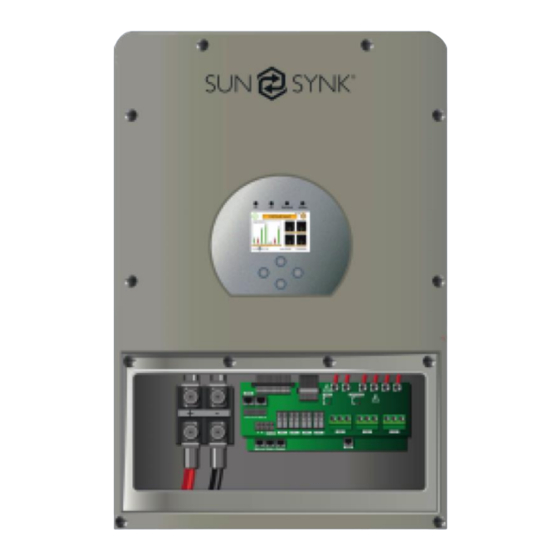
Table of Contents
Advertisement
HYBRID PARITY
(SUPER) INVERTER
INSTALLER MANUAL
SUNSYNK-3.6K-SG01/03LP1, SUNSYNK-3.6K-SG02LP1, SUNSYNK-5K-SG01/03LP1, SUNSYNK-5K-
SG02LP1, SUNSYNK-8K-SG01LP1, SUNSYNK-8K-SG02LP1
Global Tech China Ltd, 3 Floor, Wai Yip Industrial Building.
171 Wai Yip Street, Kwun Tong, Kowloon, Hong Kong.
Tel: +852 2884 4318 Fax: +8522884 4816
www.sunsynk.com / sales@globaltech-china.com
www.globaltechhk.com
Version 6.0 (08/04/2021)
Advertisement
Table of Contents
















Need help?
Do you have a question about the SUNSYNK-3.6K-SG01/03LP1 and is the answer not in the manual?
Questions and answers